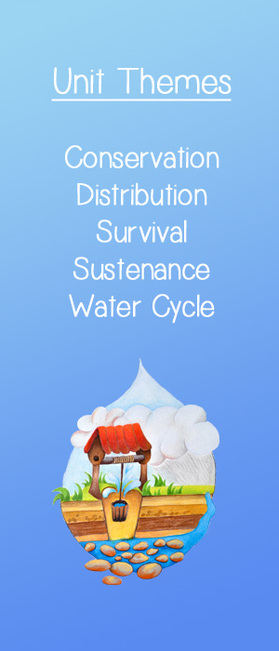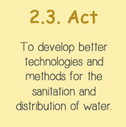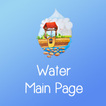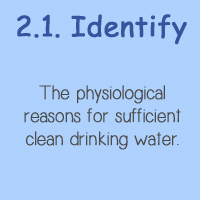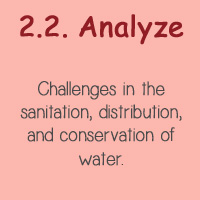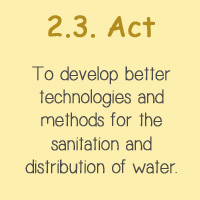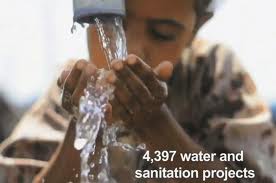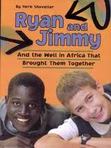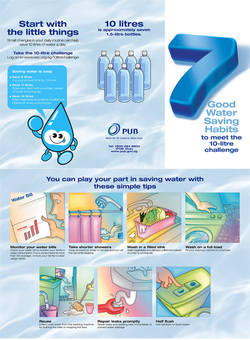Classroom Learning Activities
|
1. Water Sanitation
|
1. What technologies and methods do communities use to make their water safe for human consumption?
Recommended - Safe Water Science: Making Water Safe to Drink (grades 5-8) |
|
2. Water Distribution
|
2. What technologies and methods are used to ensure water is distributed within a community?
Building Wells - The Story of Ryan and Jimmy and the well in Africa that brought them together by Herb Shoveller It costs a lot of money to build a well in Africa -- a lot more than Ryan Hreljac had thought. Still, the six year old kept doing chores around his parents' house, even after he learned it could take him years to earn enough money. Then a friend of the family wrote an article in the local newspaper about Ryan's wish to build a well to supply people with safe, clean water. Before long, ripples of goodwill began spreading. People started sending money to help pay for Ryan's well. Ryan was interviewed on television. His dream of a well became an international news story. In Agweo, Uganda, villagers were used to walking a long way every day in search of water. What they found was often brown and smelly and made a lot of people sick. But when Ryan's well was built, life in the village changed for the better. A young orphan named Akana Jimmy longed for a chance to thank Ryan in person for this gift of life -- clean water. When they finally meet, an unbreakable bond unites these boys from very different backgrounds, and a long and sometimes life-threatening journey begins. Ryan and Jimmy is part of CitizenKid: A collection of books that inform children about the world and inspire them to be better global citizens. Recommended: Ryan's Well Foundation Teacher Resource and Lesson Plans |
The remarkable story about how one young boy decided to build a well in Africa.
|
|
3. Water Conservation:
Water Conservation Science Experiments:
|
Saving Water is Easy:
|
Relevant Convention Articles
Article 6
1. States Parties recognize that every child has the inherent right to life.
2. States Parties shall ensure to the maximum extent possible the survival and development of the child.
Article 24
1. States Parties recognize the right of the child to the enjoyment of the highest attainable standard of health and to facilities for the treatment of illness and rehabilitation of health. States Parties shall strive to ensure that no child is deprived of his or her right of access to such health care services.
2. States Parties shall pursue full implementation of this right and, in particular, shall take appropriate measures:
(a) To diminish infant and child mortality;
(b) To ensure the provision of necessary medical assistance and health care to all children with emphasis on the development of primary health care;
(c) To combat disease and malnutrition, including within the framework of primary health care, through, inter alia, the application of readily available technology and through the provision of adequate nutritious foods and clean drinking-water, taking into consideration the dangers and risks of environmental pollution;
(d) To ensure appropriate pre-natal and post-natal health care for mothers;
(e) To ensure that all segments of society, in particular parents and children, are informed, have access to education and are supported in the use of basic knowledge of child health and nutrition, the advantages of breastfeeding, hygiene and environmental sanitation and the prevention of accidents;
(f) To develop preventive health care, guidance for parents and family planning education and services.
3. States Parties shall take all effective and appropriate measures with a view to abolishing traditional practices prejudicial to the health of children.
4. States Parties undertake to promote and encourage international co-operation with a view to achieving progressively the full realization of the right recognized in the present article. In this regard, particular account shall be taken of the needs of developing countries.
1. States Parties recognize that every child has the inherent right to life.
2. States Parties shall ensure to the maximum extent possible the survival and development of the child.
Article 24
1. States Parties recognize the right of the child to the enjoyment of the highest attainable standard of health and to facilities for the treatment of illness and rehabilitation of health. States Parties shall strive to ensure that no child is deprived of his or her right of access to such health care services.
2. States Parties shall pursue full implementation of this right and, in particular, shall take appropriate measures:
(a) To diminish infant and child mortality;
(b) To ensure the provision of necessary medical assistance and health care to all children with emphasis on the development of primary health care;
(c) To combat disease and malnutrition, including within the framework of primary health care, through, inter alia, the application of readily available technology and through the provision of adequate nutritious foods and clean drinking-water, taking into consideration the dangers and risks of environmental pollution;
(d) To ensure appropriate pre-natal and post-natal health care for mothers;
(e) To ensure that all segments of society, in particular parents and children, are informed, have access to education and are supported in the use of basic knowledge of child health and nutrition, the advantages of breastfeeding, hygiene and environmental sanitation and the prevention of accidents;
(f) To develop preventive health care, guidance for parents and family planning education and services.
3. States Parties shall take all effective and appropriate measures with a view to abolishing traditional practices prejudicial to the health of children.
4. States Parties undertake to promote and encourage international co-operation with a view to achieving progressively the full realization of the right recognized in the present article. In this regard, particular account shall be taken of the needs of developing countries.
Online Resources and References
Ryan's Well Foundation grew from the commitment of one boy, Ryan Hreljac, who learned of the great need for clean and safe water in developing countries in his 1st grade class. With the support of friends, family and the community, Ryan raised enough money to build a well in Africa. In 1999, at age seven, Ryan's first well was built at Angolo Primary School in northern Uganda.
Water For South Sudan, based in Rochester, New York, USA, is a not-for-profit 501(c)(3) corporation founded in 2003. We operate successfully with a small paid staff, a network of committed volunteers, supported by civic, educational, and faith-based groups and individual donors as well as grants from foundations.
Our mission is simple: drill borehole wells which bring safe drinking water to the people in South Sudan's remote villages, transforming lives in the process. This mission is inspired and led by our founder, former “Lost Boy” Salva Dut.
How Stuff Works - How Water Works: Conservation
Global Change - Human Appropriation of the World's Fresh Water Supply
United Nations Data Collection World-O-Meters - Water Consumption: Sources and Methods
*** Recommended Source - World Health Organization - Chapter 6: Safe Water Technology by R. Johnston
Water For South Sudan, based in Rochester, New York, USA, is a not-for-profit 501(c)(3) corporation founded in 2003. We operate successfully with a small paid staff, a network of committed volunteers, supported by civic, educational, and faith-based groups and individual donors as well as grants from foundations.
Our mission is simple: drill borehole wells which bring safe drinking water to the people in South Sudan's remote villages, transforming lives in the process. This mission is inspired and led by our founder, former “Lost Boy” Salva Dut.
How Stuff Works - How Water Works: Conservation
Global Change - Human Appropriation of the World's Fresh Water Supply
United Nations Data Collection World-O-Meters - Water Consumption: Sources and Methods
*** Recommended Source - World Health Organization - Chapter 6: Safe Water Technology by R. Johnston

